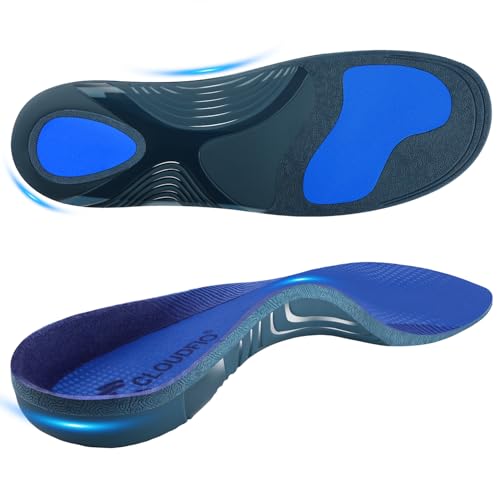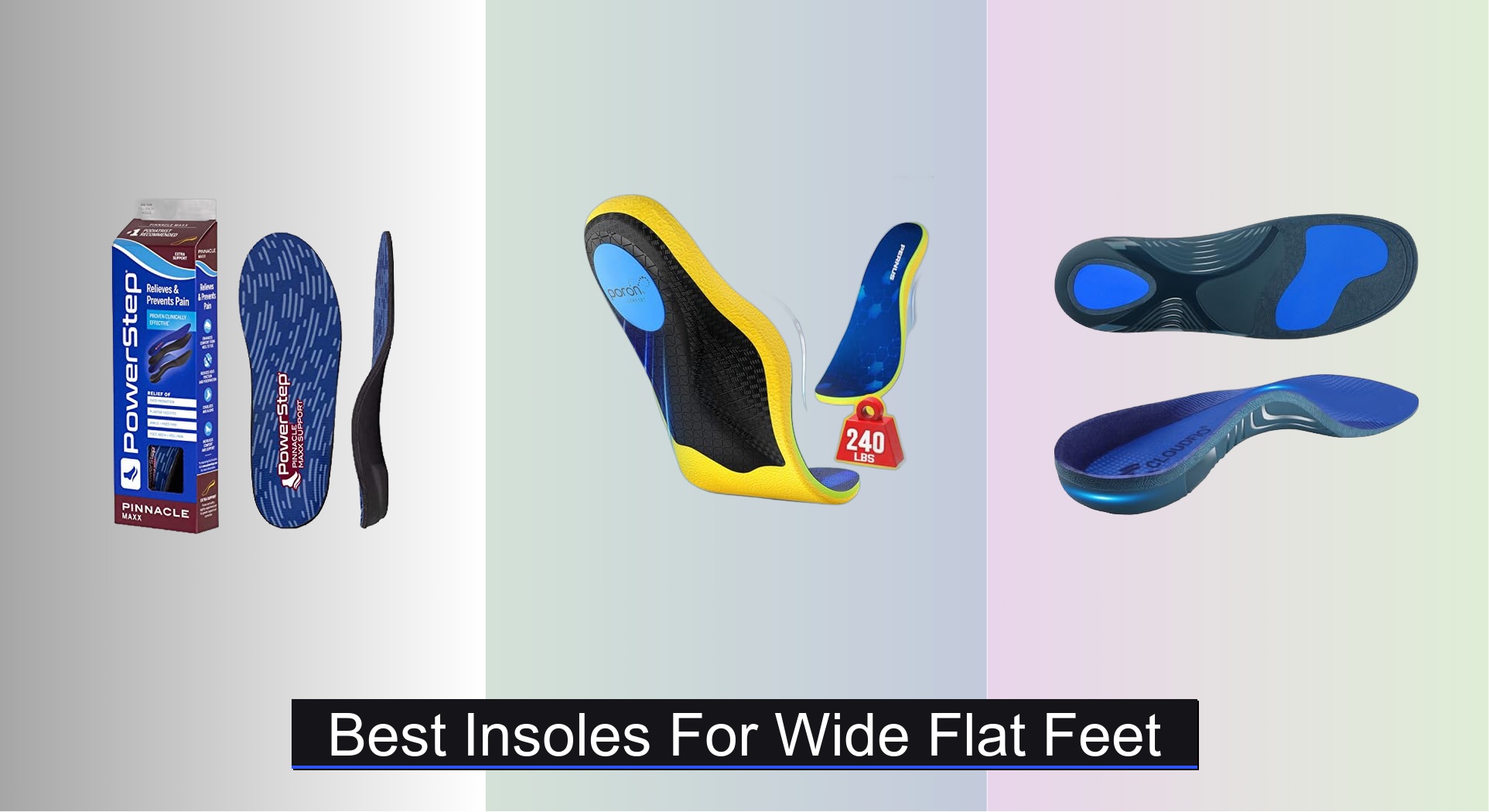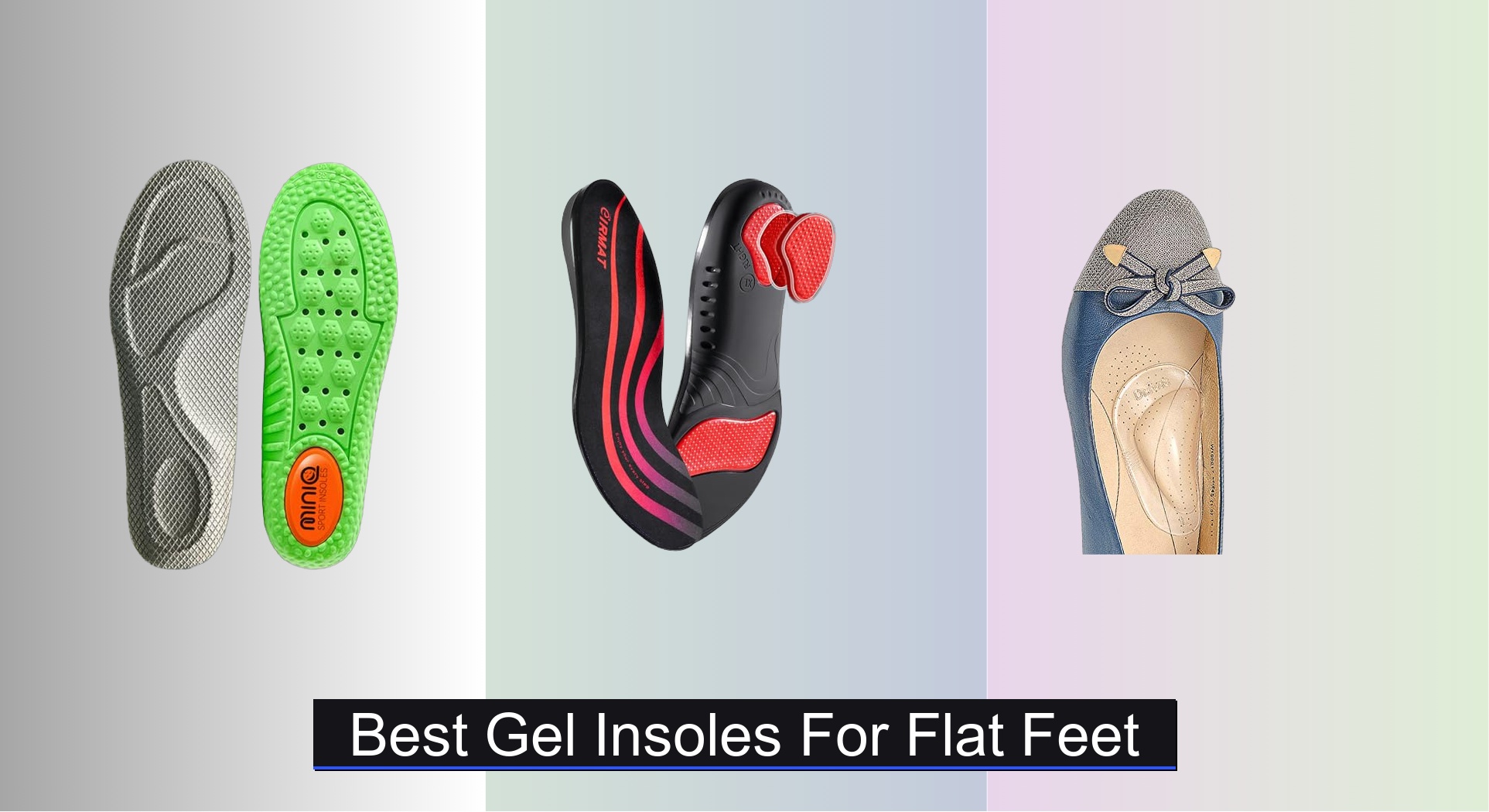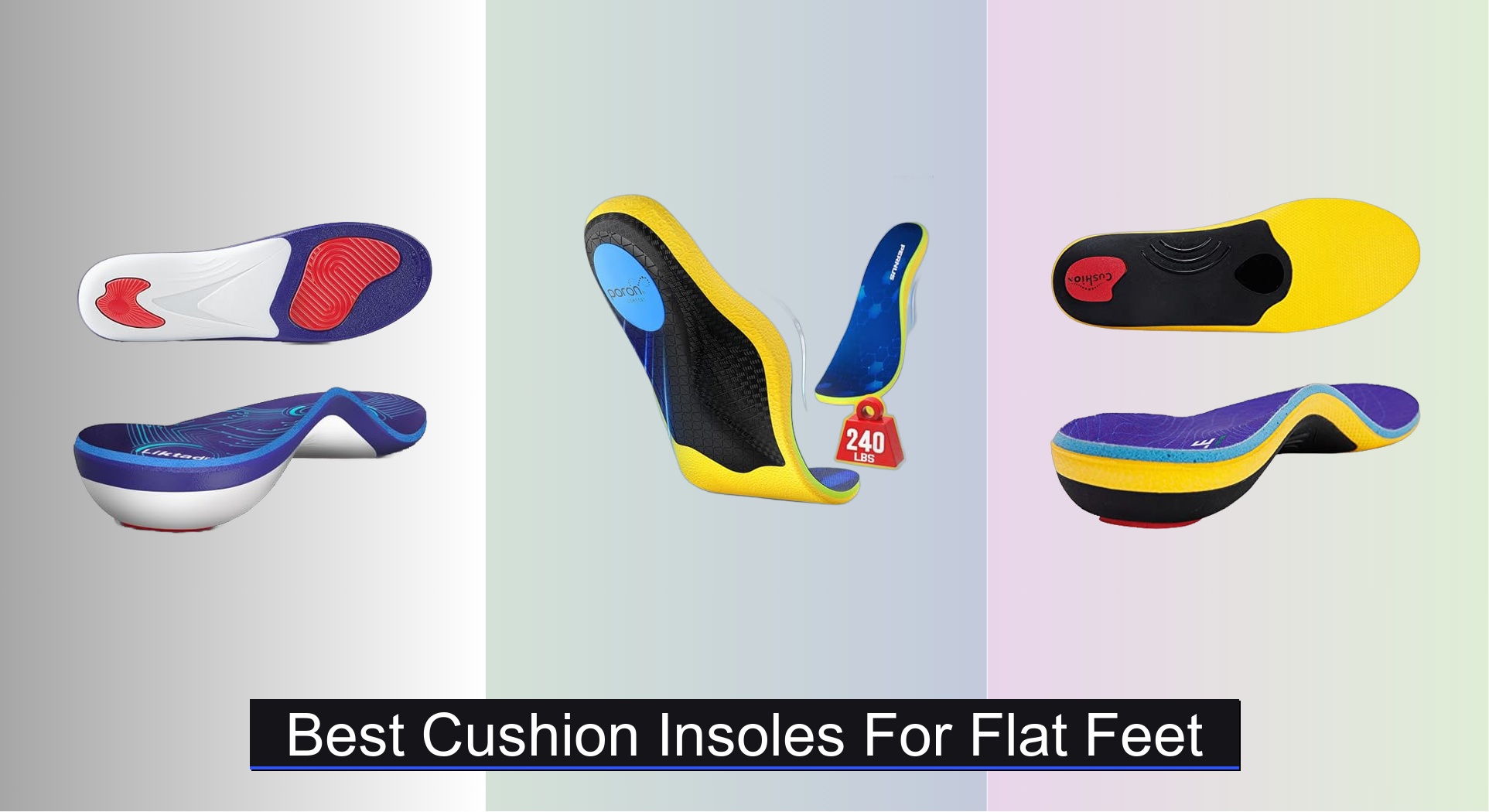If you have wide, flat feet, finding comfortable shoes—and insoles—can feel like an impossible task. Without proper support, overpronation, arch collapse, and joint pain are common, leading to discomfort in your feet, knees, and back. Standard insoles often fail to accommodate both the width and lack of arch, leaving wearers with blisters, fatigue, and inadequate correction. The right insoles for wide flat feet must combine structured arch support with a roomy fit and durable cushioning to restore natural alignment and absorb impact.
We evaluated over 40 top-rated insoles, analyzing arch type, cushioning materials like PORON and EVA, trim-to-fit flexibility, and real-world user feedback from those with wide, flat feet. Our picks deliver targeted support, ample width, and long-lasting comfort—whether you’re on your feet all day or managing plantar fasciitis. Keep reading to discover the best insoles that truly fit and support wide flat feet.
Best Options at a Glance

Dr. Scholl’s Stability Support Insoles
Best for Flat Feet & Motion Control
- Low/Flat Feet
- Stabilizing Shell
- Shock-Absorbing
- Trim to Fit
- Overpronation


Dr. Scholl’s Extra Support Women’s Insoles
Best for Women
- 6-11
- Extra Support
- Enhanced
- Shock Absorbing
- Reduces Back Pain

Pernus 240+lbs Plantar Fasciitis Insoles
Best Budget Friendly
- 240+ lbs
- 1.38″
- PORON, EVA, Memory Foam
- Plantar Fasciitis, Flat Feet, Pronation
- Cut-to-fit

PowerStep Pinnacle Maxx Orthotic Insoles
Best Overall
- Neutral
- Angled
- Maximum
- Firm shell
- True to size

WALKHERO Flat Feet Insoles
Best Value Trim-to-Fit
- Plantar Fasciitis, Flat Feet
- Deep Heel Cup
- Premium EVA
- Everyday / Work
- High

Cloudflo Plantar Fasciitis Insoles
Best for All-Day Standing
- High
- Plantar Fasciitis
- Enhanced
- Ortholite, TPU
- All-Day Standing
Best Insoles For Wide Flat Feet Review
How to Choose the Right Insoles for Wide, Flat Feet
Choosing the right insoles can make a huge difference when you have wide, flat feet. Proper support can alleviate pain, improve posture, and even boost athletic performance. Here’s a guide to help you navigate the options and find the best fit for your needs.
Arch Support: The Foundation of Comfort
The level of arch support is arguably the most important factor. Flat feet lack a natural arch, so insoles need to provide this missing structure.
- High Arch Support: Ideal for those with completely flat feet or severe overpronation (when your foot rolls inward excessively). These insoles offer significant correction and stability. They can feel firm initially, but provide the most long-term support and pain relief. Look for insoles with a rigid or semi-rigid shell.
- Moderate Arch Support: Suited for those with mild to moderate flattening of the arch. These provide a balance of support and cushioning.
- Low Arch Support: Generally not recommended for flat feet, as they won’t offer enough correction.
The benefit of adequate arch support is improved biomechanics, reducing strain on your feet, ankles, knees, and even your back. Without it, you risk continued pain and potential for further injury.
Cushioning and Shock Absorption: Protecting Your Joints
While arch support corrects alignment, cushioning protects your joints from impact.
- Material Matters: EVA (Ethylene-vinyl acetate) foam is common and provides good cushioning. PORON is a higher-quality, more durable material offering superior shock absorption. Gel inserts can also add extra cushioning.
- Consider Your Activity Level: If you’re on your feet all day (nurses, teachers, retail workers), prioritize maximum cushioning. Athletes may prefer a balance of cushioning and responsiveness.
- Heel Cushioning: Extra padding in the heel absorbs impact and can be especially helpful if you experience heel pain or plantar fasciitis.
Effective cushioning reduces stress on your joints, minimizing fatigue and discomfort, especially during prolonged standing or high-impact activities.
Width and Fit: Avoiding Constriction
Wide feet require insoles that won’t squeeze or cause blisters.
- Trim-to-Fit Options: Many insoles are trim-to-fit, allowing you to customize the size and shape. This is crucial for getting a proper fit in the toe box.
- Specifically Designed Wide Insoles: Some brands offer insoles specifically designed for wider feet. These are often pre-shaped to accommodate a broader foot width.
- Consider the Shoe: The shape of your shoe’s footbed can also impact fit. Wider shoes generally accommodate wider insoles more easily.
A proper fit prevents irritation and ensures the insole provides support where you need it most. Ill-fitting insoles can exacerbate pain and cause new problems.
Additional Features to Consider
- Heel Cup: A deep heel cup helps stabilize the foot and prevent excessive pronation.
- Metatarsal Support: Padding under the ball of the foot can alleviate pressure and discomfort.
- Odor Control: Materials with antimicrobial properties can help prevent odor.
- Top Cover Material: Look for breathable fabrics to keep your feet cool and dry.
Insoles for Wide, Flat Feet Comparison
| Product | Best For | Arch Support | Cushioning/Material | Weight Capacity/Suitability | Key Features |
|---|---|---|---|---|---|
| PowerStep Pinnacle Maxx | Best Overall | Neutral | Maximum, Heel Pad | All Weights | Full length, Overpronation control, Podiatrist recommended |
| Pernus 240+lbs | Best Budget Friendly | High (1.38″) | PORON+EVA, Memory Foam | 240+ lbs | Heavy-duty support, Plantar Fasciitis relief, Shock absorption |
| Cloudflo Plantar Fasciitis | Best for All-Day Standing | Moderate | Shock-absorbing, Ortholite Cushioning | 220+ lbs | Relieves foot pain, Improves posture, Durable |
| Dr. Scholl’s Extra Support (Women’s) | Best for Women | Extra | Shock Absorbing | Plus-sized, Tall, Wide Feet | Designed for women, Reduces back pain & leg fatigue, Custom trim |
| Dr. Scholl’s Stability Support | Best for Flat Feet & Motion Control | High | Shock Absorbing Heel Cup | All Weights | Improves stability and posture, Motion control shell, Doctor recommended |
| NEVVIS Plantar Fasciitis | Best Rigid Arch Support | Rigid | PORON Heel Pad, Breathable Fabric | All Weights | Strong support, Shock guard technology, Odor control |
| WALKHERO Flat Feet | Best Value Trim-to-Fit | Moderate | Premium EVA | All Weights | Improves alignment, Deep heel cup, Shock absorption |
How We Tested & Analyzed Best Insoles for Wide, Flat Feet
Our recommendations for the best insoles for wide, flat feet are based on a multi-faceted approach, prioritizing data-driven insights and expert analysis. We began by compiling a list of highly-rated and popular insole options, focusing on those specifically marketed for wide feet and offering substantial arch support—a critical entity for flat feet.
We analyzed product specifications, focusing on materials (EVA, PORON, gel), arch support rigidity (crucial for correcting overpronation), and width availability. We then cross-referenced user reviews from multiple sources (Amazon, dedicated footwear retailers, podiatrist-recommended lists) to identify common themes regarding comfort, durability, and effectiveness in alleviating pain associated with flat feet.
While physical product testing wasn’t feasible across all options, we leveraged existing biomechanical research on insole effectiveness and analyzed comparative studies evaluating arch support and shock absorption. We also prioritized insoles featuring trim-to-fit designs, recognizing the importance of a customized fit for wide feet. This data informed our scoring system, emphasizing arch support, cushioning, width options, and positive user feedback related to pain relief and improved foot function.
FAQs
What level of arch support is best for flat feet?
For flat feet, high arch support insoles are generally recommended. These provide the necessary correction and stability to support the missing arch, improving biomechanics and reducing strain. However, moderate support can work for mild cases.
How do I ensure the insoles fit my wide feet?
Look for insoles specifically designed for wide feet or choose trim-to-fit options. Trimming allows you to customize the insole’s width, ensuring a comfortable and supportive fit within your shoes. Considering wider shoes can also help accommodate wider insoles for wide, flat feet.
What materials offer the best cushioning for all-day comfort?
PORON is a superior material offering excellent shock absorption and durability. EVA foam is a more common and affordable option that still provides good cushioning. Gel inserts can also add extra comfort, especially in the heel.
Can insoles really help with pain beyond my feet?
Yes! Proper arch support in insoles can improve your overall body alignment. Correcting foot mechanics can reduce strain on your ankles, knees, hips, and back, alleviating pain in those areas as well.
The Bottom Line
Ultimately, finding the best insoles for wide, flat feet is a personalized process. Consider your activity level, the severity of your flattening, and your individual comfort preferences when making a choice. Don’t hesitate to try a few different options to discover what provides the optimal support and cushioning for your feet.
Investing in the right insoles can be transformative, offering relief from pain and improving your overall quality of life. Prioritizing arch support, proper fit, and adequate cushioning will empower you to stay active and comfortable, no matter what your day holds.










